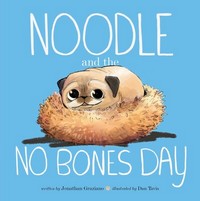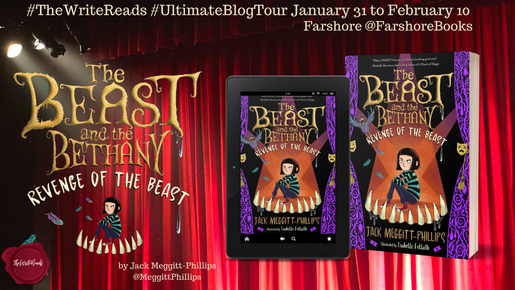by Lillie Lainoff
DETAILS:
Publisher: Farrar, Straus and Giroux (BYR)
Publication Date: March 8, 2022
Format: eARC
Length: 336 pgs.
Read Date: March 5-6, 2022


The Publisher’s Description
I keep stumbling over coming up with my own synopsis, it’s either too long, too spoiler-filled (although I wonder if I’d have said as much as this does), or too brief to be worth it. So, here’s what the publisher has to say:
Tania de Batz is most herself with a sword in her hand. Everyone thinks her near-constant dizziness makes her weak, nothing but “a sick girl.” But Tania wants to be strong, independent, a fencer like her father—a former Musketeer and her greatest champion. Then Papa is brutally, mysteriously murdered. His dying wish? For Tania to attend finishing school. But L’Académie des Mariées, Tania realizes, is no finishing school. It’s a secret training ground for new Musketeers: women who are socialites on the surface, but strap daggers under their skirts, seduce men into giving up dangerous secrets, and protect France from downfall. And they don’t shy away from a sword fight.
With her newfound sisters at her side, Tania feels that she has a purpose, that she belongs. But then she meets Étienne, her target in uncovering a potential assassination plot. He’s kind, charming—and might have information about what really happened to her father. Torn between duty and dizzying emotion, Tania will have to decide where her loyalties lie…or risk losing everything she’s ever wanted.
POTS
The main characters of this novel are Tania and her fellow musketeers, the head of L’Académie des Mariées, the bad guys, and Postural Orthostatic Tachycardia Syndrome. The description talks says, “Everyone thinks her near-constant dizziness makes her weak, nothing but ‘a sick girl.'” Which introduces that character.
Obviously, no one has actually diagnosed Tania with POTS, and most of the characters don’t know the extent of the Syndrome’s impact on her (not just because she hides it as much as possible). But that’s what she has—I know that not just because the symptoms are recognizable to those who can, nor because it’s in all the marketing materials I’ve seen—but because there’s a great note at the back describing the author’s own experience with it (and, as I understand it, the same applies to the audiobook narrator).
It’s depicted, discussed, and addressed in period-appropriate ways, which is great. This is a really good way to raise awareness and understanding of POTS. I, for one, needed that—and I’m pretty sure I’m not alone in that.
I’d never heard of POTS until a few months ago—or if I had, it didn’t take root in my consciousness—but a family member was diagnosed with it. I’ve read websites, heard them discuss it, and so on, so I had a decent understanding. But after reading this novel, I think I have a richer understanding. Lainoff helped me walk a mile in the shoes of someone with the Syndrome in a way I hadn’t been able to before. The book is going to have a special place for me because of that.
I want to stress that I’d have enjoyed it anyway and would’ve appreciated “the look behind the curtain” of POTS without the personal connection, and I’m certainly not recommending it only because of the depiction of POTS. But it was a personal highlight.
YA-ness
Every so often when I’m reading a YA/MG book, I feel like a grumpy old man. The things that make a book fitting for the target audience jump out at me, they usually don’t make me like a book less (maybe they help me cut the book some slack). So what I’m saying here—just because I mention something, it doesn’t mean I’m critiquing/criticizing/complaining about it, it’s just something that jumped out at me.
Also, I know some readers of this blog have a YA allergy (or at least sensitivity), and I want to provide them with enough information to make an informed choice.
One for All is a very much YA book. If you bear in mind that it is one, the excesses/lack of subtlety/predictability of the book can be understood/expected.
Would I have preferred a little more nuance? A little more complexity? Sure. But Lainoff’s plot and characters were good enough to make up for it.
I also think it’s the YA-ness of the book that makes the transplanting of progressive 21st Century attitudes, expectations, and behaviors on the part of some of the characters in this 17th Century setting work. Were this written with older readers in mind, there’d be more internal conflict (amongst Tania’s group, and likely within some of the individuals) against bucking the cultural norms to the degree that they do.
Tous Pour Un
Big themes that one might expect to be addressed in a book like this would be romance, maybe family, likely even found family. And that’s not really what happens here. (well sort of found family, but it feels different to me, your results may vary)
Instead, it’s about camaraderie. It’s about a team. A group working together in a very Star Treky “the needs of the many outweigh the needs of the few…Or the one” kind of way. The four Mousquetaires have different political, social, and personal agendas—which are respected, understood, and shared to varying degrees—that they put aside for the needs of each other.
Time and time again, they tell each other “we won’t let you fall.” Mistakes will be made, errors will occur—hugely stupid choices will be made—but these four rally together to form a bond that is truly all for one and one for all.
I love seeing things like this—and I don’t see it often enough. And when I do see it, it’s largely an unstated thing. Sometimes it will be discussed with an outsider, but rarely within the group. And I get that, and there’s a certain beauty and nobility about not having to say it. At the same time, there’s a beauty in saying it. It’s great having examples of people reassuring each other, “I’ve got your back, I’m on your six, and I will help when needed” is a wonderful thing. How many of us need to hear that ourselves? So seeing it in a group of characters? I absolutely loved it and it’s likely my favorite thing about this book.
Use of French
Lainoff will frequently drop in a word, phrase, or sentence in French in the middle of dialogue or the narration. It’s almost always immediately translated or given enough context clues that a translation is unnecessary (generally she still provides one even when it’s unnecessary).
It was a nice way to brush up on my high-school French, for sure, but I really can’t tell you why it was used 97% of the time. And even that 3% I could guess about, I’m not certain that it was necessary or useful.
It was a nice bit of seasoning—little dashes of spice to add flavor—but nothing the recipe needed.*
* See the section head above for an accidental example of what I’m saying.
So, what did I think about One for All?
I really had fun with this book. I think I liked it in a “the whole is greater than the sum of its parts” kind of way. I do think if I focused on story X or Y; character W or Z; or theme A, B, or C; I might end up quibbling with the book. But the experience as a whole really worked for me and gave me almost everything I wanted in this book. (a little more humor or panache would’ve been nice—but now that the four have established themselves, that’s possible in a sequel)
It’s a familiar premise, well-executed—with just enough distinctiveness about it to make this stand out. Good characters acting in largely relatable and believable ways. Solid action that’s well used (although I’d like the volume turned up just a little bit on those scenes). It’s very much an origin story kind of thing and does a good job of introducing and creating a world as well as populating it.
If there’s a sequel, I will read it. If this is a stand-alone, I’m satisfied with it. Which is a great spot to be in, and not one I find myself in a lot lately. Particularly when you bear in mind the target audience, this is an enjoyable and satisfying read that I’m pleased to recommend.
Disclaimer: I received this eARC from Macmillan Children’s Publishing Group via NetGalley in exchange for this post—thanks to both for this. Although I’m sorry that this posted the day after publication, I tried, really.

This post contains an affiliate link. If you purchase from it, I will get a small commission at no additional cost to you. As always, opinions are my own.

 Noodle and the No Bones Day
Noodle and the No Bones Day
![]()


















